Building of the Day: 9 DeKalb Avenue
Brooklyn, one building at a time. Name: Originally Dime Savings Bank Address: 9 DeKalb Avenue Cross Streets: Intersection Albee Place, Fulton St. Neighborhood: Downtown Brooklyn Year Built: 1906-08, Enlarged: 1931-32 Architectural Style: Classical Architect: Original building-Mowbray & Uffinger. Enlarged by Halsey, McCormick & Helmer Other Buildings by Architect: M&U- Newark City Hall, NJ, People’s Trust…
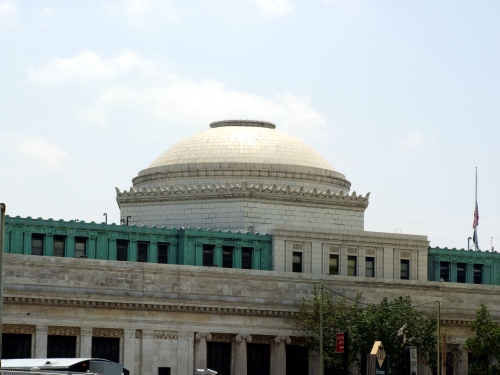
Brooklyn, one building at a time.
Name: Originally Dime Savings Bank
Address: 9 DeKalb Avenue
Cross Streets: Intersection Albee Place, Fulton St.
Neighborhood: Downtown Brooklyn
Year Built: 1906-08, Enlarged: 1931-32
Architectural Style: Classical
Architect: Original building-Mowbray & Uffinger. Enlarged by Halsey, McCormick & Helmer
Other Buildings by Architect: M&U- Newark City Hall, NJ, People’s Trust Bank, Montague St, 874 Carroll St, 1 Montgomery Place, Park Slope, H M & H- Williamsburg Savings Bank, Hanson Place, Kings County Savings Bank, Eastern Pkway, and others.
Landmarked: Yes, Individual Landmark (1994)
The story: This is one of the great buildings of Brooklyn. A good bank takes care of your hard earned money, a great bank makes it a privilege to go inside the temple and worship it, and that’s exactly what this bank is, a temple to money. More specifically and ironically, a temple to honor the humble dime.
Speaking of money, the location of the bank is important to the story, as well. By the beginning of the 20th century, most of Brooklyn’s important financial institutions were located near City, now Borough Hall. Fulton Street was a bustling shopping and entertainment corridor, not really a financial hub in that sense, but the building of the Manhattan Bridge, which opened in 1905, changed the traffic patterns, as the Flatbush extension brought masses of new traffic and the possibility of a new customer base to the expanded Flatbush Extension. The changing streets formed a unique intersection here, a perfect place for a handsome bank in the Classical style.
The Dime Savings Bank of Brooklyn had been founded in 1859, where it was possible to open an account with just a dime. Its directors were wealthy merchants and a couple of ex-mayors, and the bank grew quickly, moving from building to building on Court and Montague Streets. The bank was so successful, they needed new headquarters, and hired Louis Mowbray and Justin Uffinger, whose partnership had produced several banks, including the People’s Trust on Montague, as well as private houses in Manhattan and Brooklyn. The pair designed a beautiful Classical structure, which combined Greek and Roman elements. Early postcards and photographs show a bank that is similar to the one we see today, yet very different, as the changes made by Halsey, McCormick, & Helmer took this very good building, and made it great.
In spite of the Great Depression, the Dime was going strong, perhaps because it was a savings bank, supported by the millions deposited by individuals who literally put their dimes in this trusted bank for safekeeping. The original building, as well as an extension, which is long gone, was not big enough. Halsey, McCormick & Helmer set about adding 14,000 square feet to the building, by expanding existing spaces, raising the roof and adding offices and conference rooms, digging sub-basements, and adding to the rear of the building. Whenever possible, they used the original details, sometimes expanding the footprint, and putting the details back.
It was they who remodeled in interior into the temple of money we enjoy today, adding the rotunda’s dime theme, with lavish Deco details, with bronze and marble details, and Mercury headed dimes everywhere; in the floor, on the ceiling, and anywhere else they could put them. They also added the allegorical frieze to the exterior, figures that extolled thrift, industry and prosperity. For more information, and more period photos, please see my Walkabout article here.
The Dime Savings bank eventually merged with another bank, and the building would pass through a number of familiar bank names, changing as the banking industry merged, and re-merged, all with different names. In spite of Downtown Brooklyn’s ups and downs, the bank has always remained open, and a vital part of Brooklyn life. With the demolition of the Albee Square Mall, the entire glorious side of the building could be seen for the first time in years. It was just beautiful. GMAP
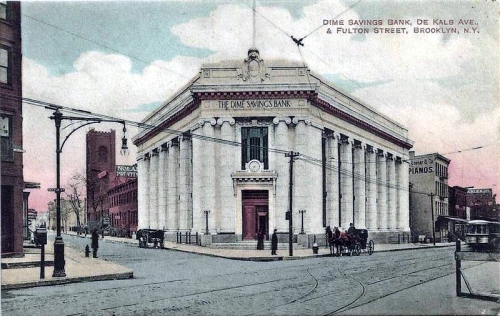
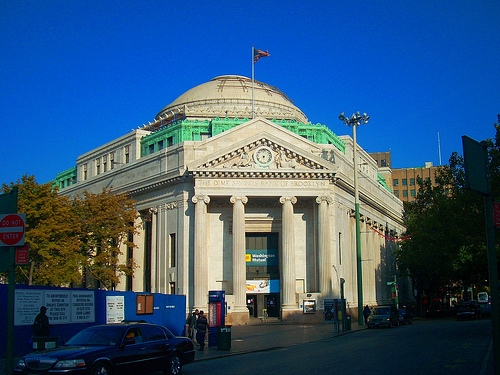
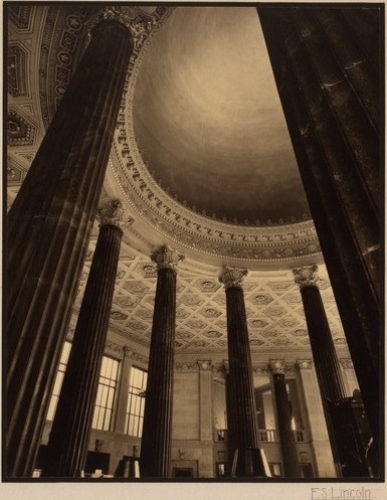








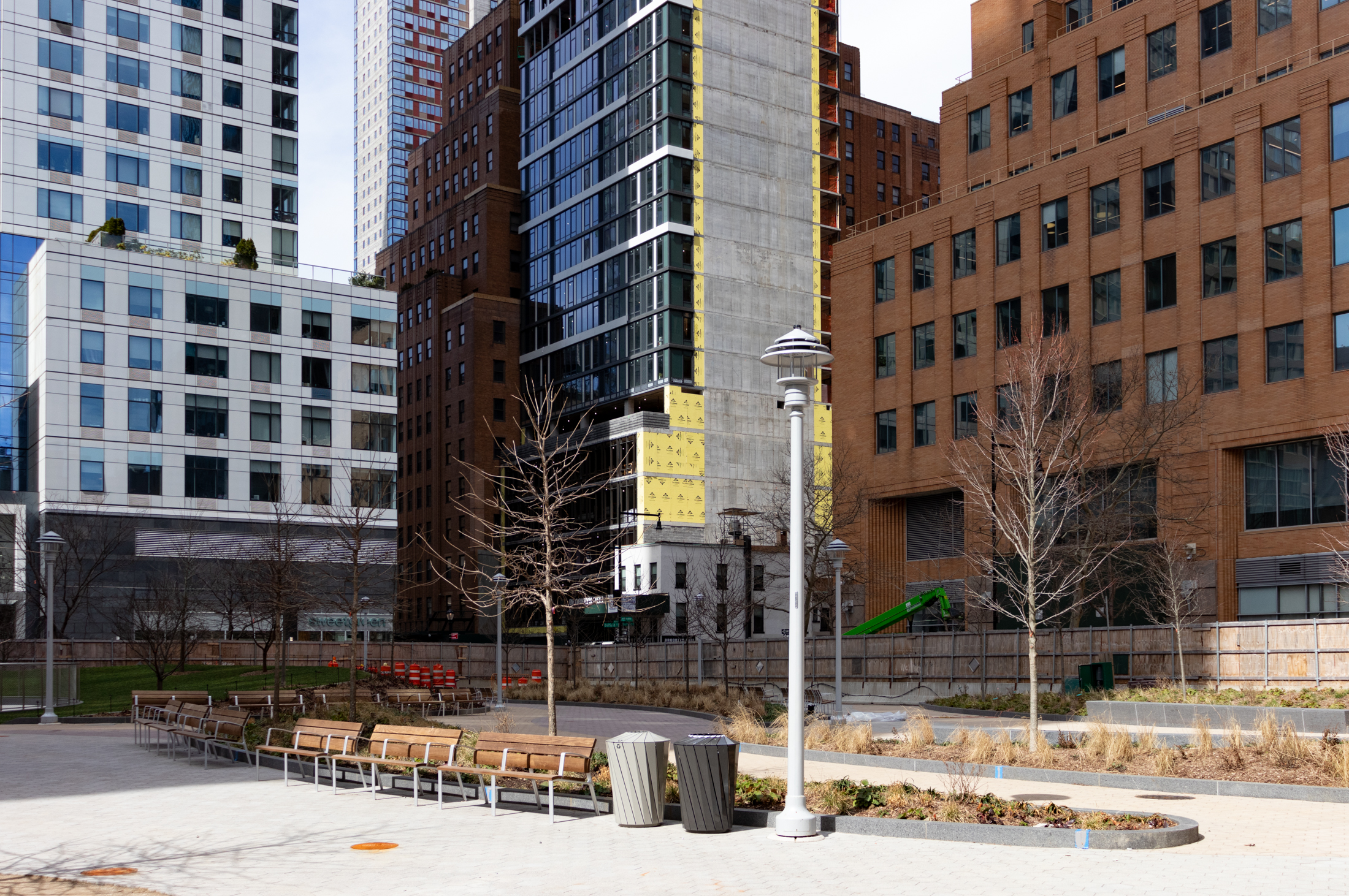
What's Your Take? Leave a Comment